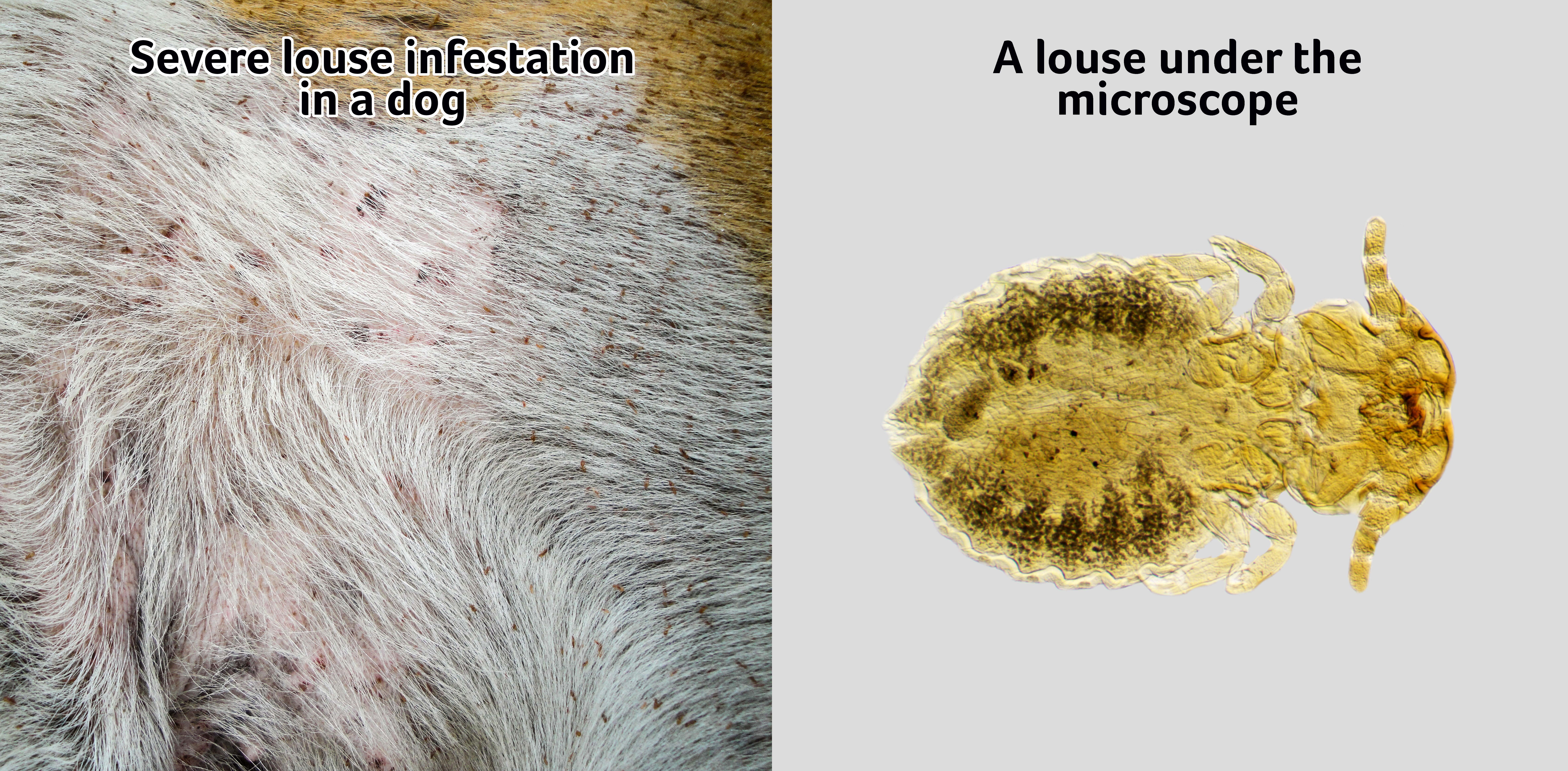Lice in dogs
Overview
- Louse infestations in dogs are quite uncommon. They generally only affect vulnerable dogs (young, old or unwell) and those kept in dirty or overcrowded conditions.
- Lice cause itchy, dry, scaly skin, and dandruff.
- Some lice also suck blood, which can lead to illness and anaemia.
- Treatment for lice is often relatively simple, the sooner a dog is treated, the more likely they are to recover without complications.
Lice explained
Lice are tiny skin parasites that cause itchy, dry, flaky skin. Some lice also suck blood, which can lead to illness and anaemia (especially in very young or small dogs).
Lice are uncommon compared to such as other skin parasites, such as fleas, mites and ticks. They tend to only affect vulnerable dogs (young, old or unwell) and those living in dirty, overcrowded conditions.
Fortunately, lice only live on one species and very rarely cross over to others. This means it is very difficult for you to catch lice from your dog (or for your dog to catch them from you or other species).

This dog has a severe louse infestation – note the brown speckles (lice) in his fur
Symptoms
If your dog has lice they may have some of the following symptoms.
- Itchy skin
- Dry, scaly skin and dandruff
- Visible lice - slow moving brown dots
- Visible lice eggs - white dots on the fur
- Alopecia (fur loss)
- Pale gums (due to anaemia, usually only in young animals)
Treatment
If your dog has been diagnosed with lice, they will need the following treatments:
A product to kill the lice on your dog
- Often a ‘spot-on’ or shampoo.
- You will also need to treat any other pets that are in regular, close contact.
- Keep your dog away from other pets until they have recovered.
A product to kill any lice/eggs in your home.
- Lice lay eggs that can survive in the environment for 2-3 weeks after they have been laid.
- You will need to treat pet bedding, brushes, coats and the household (eggs will continue to hatch in the environment for 2-3 weeks after they have been laid).
Treatment for any other skin problems
- Such as wounds or infected skin
Treatment for anaemia
- In the rare case of a severe louse infestation, your dog may become unwell or anaemic and need admitting into the veterinary hospital for intensive care.
It’s important to follow your vet's instructions carefully, and keep a close eye out for any returning symptoms for a few weeks after treatment. Always make sure you finish the full course of treatment to make sure the lice don’t return.
Outlook
Given the right treatment, most dogs recover very well from a louse infestation. However, if your dog has a very large infestation, or is left without treatment for too long, there is a chance that they could develop anaemia (blood loss) especially if they are already weak, which can cause severe illness and even death.
Published: August 2020
Did you find this page useful?
Tell us more
Please note, our vets and nurses are unable to respond to questions via this form. If you are concerned about your pet’s health, please contact your vet directly.
Thank you for your feedback
Want to hear more about PDSA and get pet care tips from our vet experts?
Sign up to our e-newsletter
Written by vets and vet nurses. This advice is for UK pets only. Illustrations by Samantha Elmhurst.

